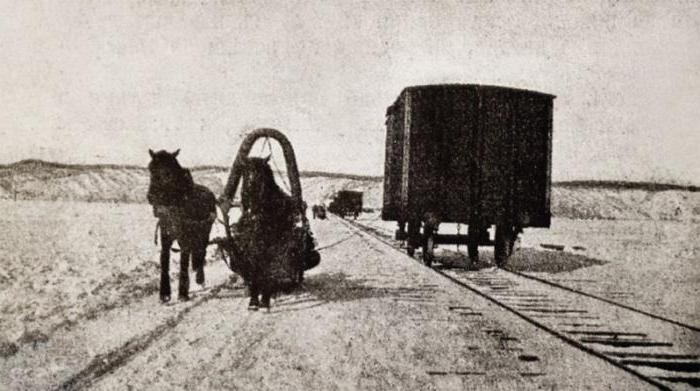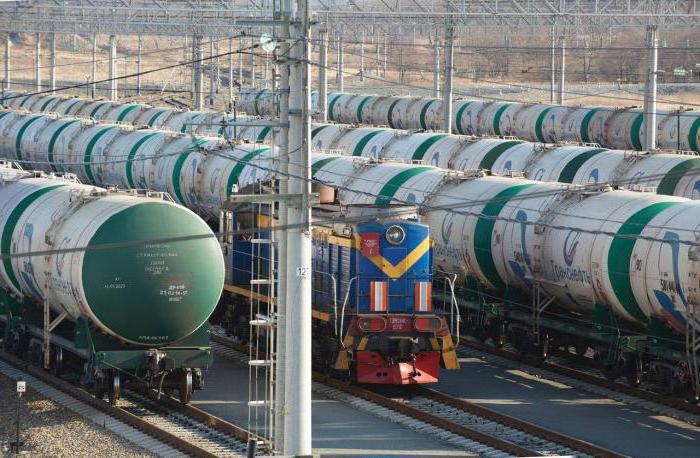The Far Eastern Railway is the main passenger and cargo artery connecting the center of Russia with the areas adjacent to the Pacific Ocean. Currently, the importance of this highway is difficult to overestimate. More than a century-old history of the Far Eastern Railway is of interest not only to enthusiasts, but also to everyone who cares about the past of our country.
A look into the past
The idea of building a new railway arose a long time ago - communications were too stretched, delivery of goods to the distant lands of the empire was difficult. In 1886, governor generals of Eastern Siberia and Amur region put forward proposals to lay several railway lines from Tomsk and Vladivostok to remote settlements. By mid-1887, this proposal had already been considered at a ministerial meeting, and an engineering expedition was sent to the region of South Siberia to consider the possibility of this project and study the timing of its implementation.
Pioneer and engineer
The Far Eastern Railway owes much to one of its first engineers. The name of the first builder of the Far Eastern Railway was undeservedly forgotten. But it was Alexander Ivanovich Ursati who was honored to be the first to drive the whole long way from Grafsky to Vladivostok. Through various roads, making their way off-road to small villages and deaf sites of nomads, the railway engineer built a route and studied the area along which the Far Eastern Railway would pass. Unfortunately, to date, not a single railway station has been named in his honor.
Project implementation
Initially, the planned railway line was called Ussuriysk. It received such a name from the large Ussuri River, which flows through the vast territory of the Primorsky Territory - from Khabarovsk to Vladivostok. Two sections of the highway were planned separately: the North Ussuri branch covered the section from the station. Count to Khabarovsk. The southern section was planned to lead from the same station to Vladivostok. The solemn laying of the first rail took place in 1891, in the city of Vladivostok, in the presence of members of the royal family and representatives of the cabinet. The first stone in the foundation of the Vladivostok station was laid by Tsarevich Nikolai - the future Emperor of Russia Nikolai II.
First sections
In 1892, Russia began the direct construction of railways. O.P. Vyazemsky, an experienced builder who worked for about thirty years in various regions of Russia, was appointed project head. It was entrusted to the graduates of the St. Petersburg Institute of Railway Engineers to conduct work on separate sections of the highway. Auxiliary dirt roads were laid for the transportation of the necessary materials , which later became important transport arteries of the entire Primorsky Territory.

The immediate problem suddenly faced the issue of providing construction workforce. There were too few local residents - they had to attract exiled prisoners and soldiers. By 1895, the number of people serving sentences for criminal and political reasons was about 11 thousand people. For them, stationary camps were created, consisting of barracks, premises for security, baths, dining rooms and surveillance towers. As for the soldiers, they were transported by sea along the long southern route from Odessa through the Atlantic and Indian Ocean. Swimming took several months, accompanied by outbreaks of tropical epidemics. The final destination was Vladivostok.
Thanks to the dedicated work of soldiers and prisoners, the South Ussuri branch of the road was put into operation by 1894, and the northern section of the track was completed three years later. The Far Eastern Railway, whose stations covered the Amur Region and the Far East, began to exist.
Train stations
The old Ussuri road in the original version had 39 stations. Among them is the Ruzhino station, founded by immigrants from Ukraine, Art. Manzovka (now Sibirtsevo), Art. Busse, named in honor of the Russian officer and researcher of the Far Eastern region N.V. Busse. Topographers and civil engineers were not forgotten: the names from L. Khabarovsk to Bikin were named after L. M. Rozengard, V. S. Ilovaysky, V. V. Gedike. And at present, the Far Eastern Railway has 358 functioning stations on different sections of the track.
Economic and geographical characteristics of the Far Eastern Railway
Currently, the Far Eastern Railway has about 7470 km of the total length of the tracks, of which more than 6000 km are in constant operation. Geographically, this highway runs through the territory of five Far Eastern regions - the Amur Autonomous Okrug, the Jewish Autonomous Oblast, along the Primorsky and Khabarovsk Territories; its branches are also located in the Republic of Sakha. It extends its influence to other regions of the Far East. In total, over 40% of the territory of the Russian Federation is in the zone of influence of the Far Eastern Railways.

The Far Eastern Railway borders the East Siberian Railway along the Khani station, and at the Sturm and Arkhara stations it is connected to the Zabaykalsky Railway. Throughout its length, its routes are divided into four sections, which are supervised by various departments united under the auspices of the Far Eastern Railway. Khabarovsk is a branch of NOD1, Vladivostok is NOD2, Komsomolsk is NOD3, and Tynda is NOD4. In addition, the Far Eastern Railway is conditionally divided into two main directions - the northern latitudinal passage and the main passage. They are interconnected by small rocky sections of the track: Komsomolsk – Volochaevka-2, Tynda – Sturm, Izvestkovaya – Urgal. Such logistics allows the formation of trains along the entire path.
The significance of the Far Eastern Railway
The basic characteristics of the Far Eastern Railway give reason to consider it one of the main logistics and passenger highways in the region. Over the past 2015, more than 42 thousand tons of various cargoes were transported via the Far Eastern Railways, and about 5 thousand people used the services of the Far Eastern road as passengers. The main line carries out transportation of domestic and international significance - entrepreneurs of Japan, Mongolia, Korea and China are interested in its uninterrupted operation, who sell their products on the territory of our country. Cargo management is carried out from the Unified Dispatch Center, located in Khabarovsk.
The Far Eastern railway artery rightfully occupies a leading position in the rating of transportation of exported and imported goods, whose share is about a third of the total number of cargo transportation in the Russian Federation and over a quarter of transit transportation of imported products from other countries. Thanks to the established logistics, the Far Eastern Railways department reported that in 2016 it is planned to transport more than 116 million tons of cargo to the ports of the Pacific Ocean via the Far Eastern railway. Favorable growth trends in trade with the eastern neighbors allow us to confidently predict a significant increase in rail traffic in the very near future.
Control
As of 2015, the number of employees of the Far Eastern Railways was more than 40 thousand people employed in the maintenance of this highway. This highway gives locals jobs and confidence in the future.
The Directorate of the Far Eastern Railway is directly subordinate to Russian Railways and is its structural branch. Since 2015, Maklygin N.V. has been holding the position of the head of the Far Eastern Railway. Under his leadership are all the working areas operated by the Far Eastern Railway. The office address of the Far Eastern Railways is Komsomolsk-on-Amur, Khabarovsk Territory. Various territorial administrations have their own leadership.
Security
According to the head of the Khabarovsk department of the Far Eastern Railways, the prevention of the safety of the operation of tracks and trains of the Far Eastern Railway is a priority. In 2015, 18 emergencies were recorded on the Far Eastern road network, in which three people died. All accidents occurred due to the fault of drivers who drive vehicles and violate the rules of the road.
The site of the safety raid was a section of the route along the Nogliki-Korsakov line. To attract attention to the consequences of non-observance of the rules of the road safety, the railway workers put in a prominent place several cars that were wrecked as a result of the accident. Thus, railway workers tried to remind car owners of the risks that accompany the driver when crossing the railway lines. In addition to employees, the action was attended by traffic police and representatives of MUP "Transport company".